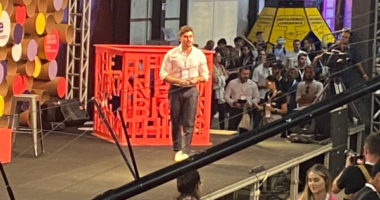The Science Based Targets initiative (SBTi) has gained momentum and is now the world’s largest verifier of corporate climate targets. More than 4,700 companies have pledged to set SBTi-aligned goals to reduce emissions from their operations and value chains, and around 2,400 of them have had these goals officially verified. The SBTi is dealing with an increase in applications for verified targets, which has led to soaring demand for validation. The SBTi is increasing its capacity, developing short-term technical solutions, and improving its technical governance to maintain credibility and robustness while meeting the demand. The SBTi’s strategy aims to close the current ambition and emissions gap by scaling up 1.5C-aligned corporate climate action in the heaviest-emitting sectors and emerging markets. The SBTi is phasing out 2C-aligned targets and accepting only target submissions in line with 1.5°C. Companies with approved 2C-aligned targets will need to recalculate and resubmit their targets to align with 1.5°C within five years of their initial validation.
Your FAQs on setting science-based targets, answered by the SBTi.
The Science Based Targets initiative (SBTi) has become the world’s biggest verifier of corporate climate targets, with over 4,700 companies pledging to set SBTi-aligned goals to reduce emissions from their operations and value chains. Of these, around 2,400 have had their goals officially verified.
Several factors have contributed to the SBTi’s growth, including top-down pressures on businesses, such as the adoption of net-zero targets by nations and regions, bottom-up pressures like investor and consumer demand for clearer sustainability plans, and reasons relating to minimizing climate risk and building in resilience.
To help more organizations get involved, the SBTi has created a streamlined route for SMEs, excluding financial institutions and fossil fuel companies, to set science-based targets immediately by choosing from one of several predefined target options. Unlike larger companies, SMEs are only required to set targets for their Scope 3 (indirect) emissions if they are committing to long-term net-zero targets. However, all SMEs must commit to measuring and reducing their Scope 3 emissions in the near-term.
The initiative does not assess and validate targets from public sector organizations, but they can use existing SBTi resources to develop their own targets. The SBTi was created to accelerate climate action from the private sector by filling the knowledge gap between climate science and industry, engaging with corporations responsible for a large amount of emissions to make the greatest impact possible.
The SBTi Reaches a ‘Critical Mass’
The Science Based Targets initiative (SBTi) has reached a ‘critical mass’ globally and in key regions, with 27% of all high-impact companies setting science-based targets worldwide. The team now reviews more than 1,000 target submissions each year.
As demand for verification continues to grow, the SBTi has validated more targets from businesses in 2021 than in all the previous six years combined. To meet the increasing demand, the SBTi is increasing its capacity so that it can reach its goal of reaching 10,000 companies and five gigatonnes of corporate emission coverage by 2025. The organization is also improving its technical governance to maintain its credibility and robustness while meeting that demand. The SBTi will announce the members of its new Technical Council, a permanent, independent decision-making body appointed and overseen by the SBTi Executive Board. The organization has also appointed its first compliance director, Anita Sheth, and chief impact officer, Maria Outters. Paul Simpson OBE, former CDP chief executive, is also working with the SBTi as strategic advisor.
The huge interest in science-based targets from companies and financial institutions around the world has led to soaring demand for validation. The SBTi’s goal is for businesses to wait no longer than 60 business days to start their target validation process. The average wait time between target submission and validation is affected by several factors, including the quality of information provided by the company. To ensure a swift target validation process, the SBTi urges companies submitting targets for validation to read all requirements and guidance carefully and provide all the information needed.
To encourage the take-up of science-based targets in markets or sectors where they are not common at present, the SBTi recommends that companies and financial institutions engage with peers and industry associations to share knowledge and best practices. It also encourages them to participate in events like webinars and workshops hosted by the SBTi or other organizations, and to work with consultants or service providers who can support the development and implementation of science-based targets.
SBTi Strategy Aims to Close Ambition and Emissions Gap
The number of businesses setting science-based targets is growing exponentially. The SBTi’s strategy aims to close the current ambition and emissions gap by massively scaling up 1.5C-aligned corporate climate action in the next three years, especially in the heaviest-emitting sectors and emerging markets.
Between September and December 2022, the SBTi published sector-specific guidance for the forest, land and agriculture (FLAG), cement, and maritime sectors, which together are responsible for 30% of global emissions. This adds to the existing sector-specific guidance the SBTi had already published, including for the information and communication technology, power, and finance sectors. This year, the SBTi will continue to develop guidance for more heavy-emitting sectors, including oil and gas and steel.
Uptake of science-based targets is growing globally, with particularly rapid uptake in Asia. The SBTi’s Country Activation and Incubators Projects to increase in Latin America, Asia, and Africa have already delivered promising results by setting in motion the adoption of science-based targets across emerging markets.
The SBTi is phasing out 2C-aligned targets and has only been accepting target submissions in line with 1.5°C since 15 July 2022. Companies that already had approved targets aligned with 2°C or well-below 2°C will need to recalculate and resubmit their targets to align with 1.5°C within five years of their initial validation.
Don’t miss interesting posts on Famousbio








